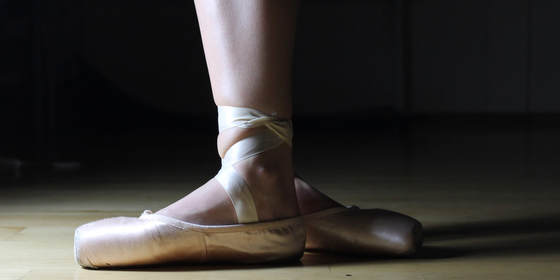|
9/10/2018 2 Comments Am I ready for pointe work?A dancer’s progression to pointe work is a much anticipated moment. It is completely normal to be excited about this milestone, but it is extremely important not to rush into pointe work. There are a variety of factors that need to be considered to ensure that a dancer is ready to sufficiently meet the demands of pointe work.
Criteria for pointe readiness based on expert recommendation:
What are the risks if I start too early? If the dancer begins pointe work without adequate range of motion and/or neuromuscular control, they can hinder proper technique development, foster bad habits, and potentially increase the amount of stress on the developing bones as well as the surrounding musculature. There is rapid bone growth and remodeling between the ages of 9-15 years old. During this time, growth plates are weaker than the surrounding bone, making them less resistant to different forces and more susceptible to injury. In addition, there are neuromuscular changes that occur as the dancer accommodates to rapid growth. The dancer takes time to adapt to changes in strength, flexibility, and proprioception, which ultimately influences motor control and performance en pointe. Therefore, chronological age cannot be a sole marker for pointe readiness (Richardson 2017, Shah 2009). It is important to communicate with your ballet teacher regarding the progress of your technique and whether you meet the criteria to initiate pointe work. Health care professionals (MD, PTs) with a background in dance can assist in conducting pointe readiness screens. *Description of pointe readiness tests:
1) Richardson, M. Principles of Dance Medicine, Functional Tests to Assess Pointe Readiness. A webinar through the Harkness Center for Dance Injuries. Accessed Feb 23, 2017. 2)Bullock-Saxton, J. E., Janda, V., & Bullock, M. I. (1994). The influence of ankle sprain injury on muscle activation during hip extension. International journal of sports medicine, 15(06), 330-334. 3) Richardson, M., Liederbach, M., & Sandow, E. (2010). Functional criteria for assessing pointe-readiness. Journal of Dance Medicine & Science, 14(3), 82-88. 4) Shah, S. (2009). Determining a young dancer's readiness for dancing on pointe. Current sports medicine reports, 8(6), 295-299.
2 Comments
|
CategoriesAll Cross Training Injury Prevention Nutrition Recipes Wellness Archives
October 2021
|

 RSS Feed
RSS Feed